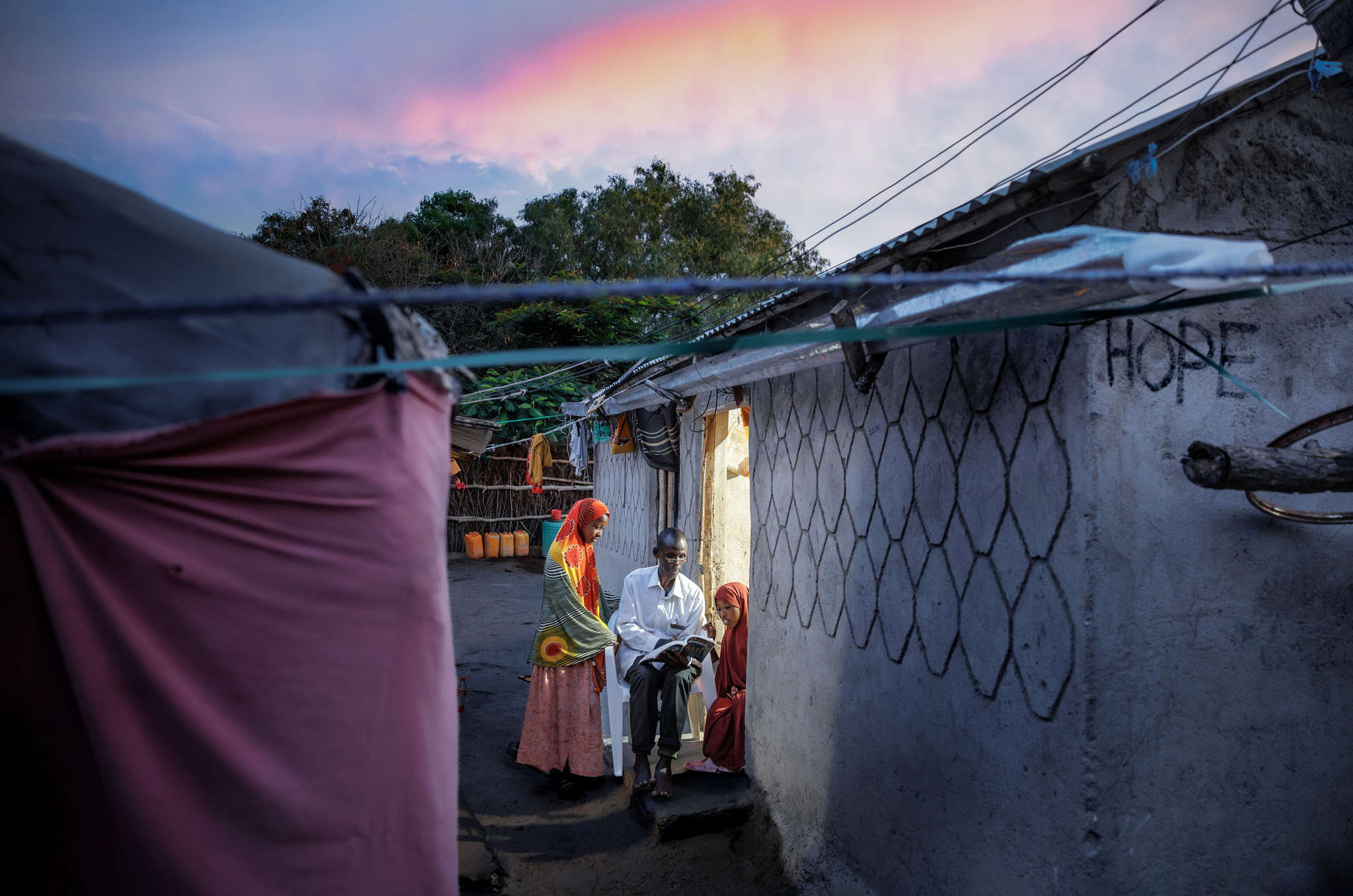On the grid: Connecting refugee communities to solar power

Not long ago, the low hum of diesel-powered generators permeated throughout Sheder Refugee Camp. Though the generators provided some access to electricity, it was costly to operate, inconsistent, only lasted two to three hours a day, and emitted pollutants. It was difficult for small businesses to earn a steady income without reliable energy. By the time night fell, families not connected to the diesel generators made do with flashlights and candles and avoided traversing across the camp in the dark. The lack of access to reliable and affordable energy affected every part of life in Sheder.
“Because of the irregular electricity supply, I could only work for 3 hours out of the 12 work hours in the day,” said Siyad (all participant names have been changed to protect their privacy), who arrived at Sheder with his family. He supports his family through his work as a tailor. “I was only earning peanuts so I couldn't even afford to provide my family’s basic needs.”
Siyad is one of the more than 14,600 who currently reside at the northeastern Fafan Zone camp for displaced people. In 2008, Sheder Refugee Camp was established in the namesake town to support the displacement of people fleeing from conflict in the neighboring Somalia. Ethiopia is home to over 4.7 million forcibly displaced people, and it is estimated that less than 7% of those people have constant access to energy. When displacement occurs, a major challenge is in connecting people to electricity for their well-being and income—not only for those displaced, but also for their host communities, who are often already affected by a lack of access to clean and adequate energy.

As more people are displaced for longer, there is a clear need to address the energy challenges that arise for communities at risk and those that support them. Displacement often extends far beyond a temporary state, with some communities displaced for decades, which contrasts with the perception of it being a short-lived situation. Through extensive research, Mercy Corps confirmed that the key reasons that communities with displaced populations receive inadequate access to energy—such as improvised energy solutions that don’t consider long-term maintenance and inadequate investment from private sector energy companies—is due to perceived business and financial risks. By addressing the challenge of access to affordable energy through cleaner, climate-smart solutions at temporary camps, people affected by displacement have better opportunities to build a sustaining livelihood to support the needs of their families.
The Enter Energy initiative—Mercy Corps’ flagship energy program—is pioneering an approach that is fostering public-private partnerships to provide access to sustainable energy and improve climate resilience in communities affected by displacement. As part of the initiative in Ethiopia, Mercy Corps cofounded Humanitarian Energy PLC with Rensys Engineering and Trading, a private Ethiopian company that provides renewable energy solutions for underserved communities. Humanitarian Energy is operating the country’s first commercially licensed private solar PV-powered mini-grid serving the refugee community of Sheder.
More than 1,000 households are now connected to reliable and sustainable energy. Humanitarian Energy customers have access to prepaid renewable energy, 24 hours a day—at half the cost of what they used to pay for two hours of diesel-powered electricity. Small business owners like Siyad can improve their productivity and earn more money. “Very soon my income is going to increase,” said Siyad. “I'm going to be rich enough to take care of my family's needs.”
Sustainable solar power boosts businesses
Many families have lived at the Sheder Refugee camp for more than a decade, building community and cultivating livelihoods. Hodan and her family have lived in the Sheder Refugee camp since 2011 and had wrestled with the challenge of earning an income to support themselves. Since connecting to the solar mini-grid, her food shop that sells chilled water, fresh fruit smoothies, and grilled meat is no longer stalled by limited power. On top of earning a more consistent income, her children are able to complete their homework at night back at home.


“As you can see there are so many businesses here—welding, carpentry, tailoring, and others—that depend on electricity. So the provision of a constant power supply will boost business,” said Suleman, who is a welder. “At some point, I had considered closing my business and thinking of new business ideas that do not depend on electric supply. I hope to make full use of this opportunity to increase my productivity.”
Enter Energy into the future
Siyad, Hodan, and Suleman’s shops are among the more than 300 refugee businesses within the camp who are now connected to the grid. To increase security, Humanitarian Energy will partner with the local administration to install streetlights across both the host and refugee communities so residents can safely move around after sunset. Mercy Corps is working with partners to introduce energy-efficient electric-based cooking devices to the Sheder community. At the core of Enter Energy’s model is to build the partnerships needed to address the total energy needs of displaced communities.
As Enter Energy scales its services in Ethiopia, Mercy Corps and Humanitarian Energy are seeking funding to expand clean energy services to three displaced communities in the Dollo Ado area, where 130,000 people encounter the same energy access challenges Sheder Camp residents have in the past. Humanitarian Energy is also increasing its services to include solar power and battery-based systems for organizations, like the U.N., to improve operations and security for integrated humanitarian efforts. Climate-smart solutions and renewable energy are helping people grow resilience within their own communities—and beyond.



